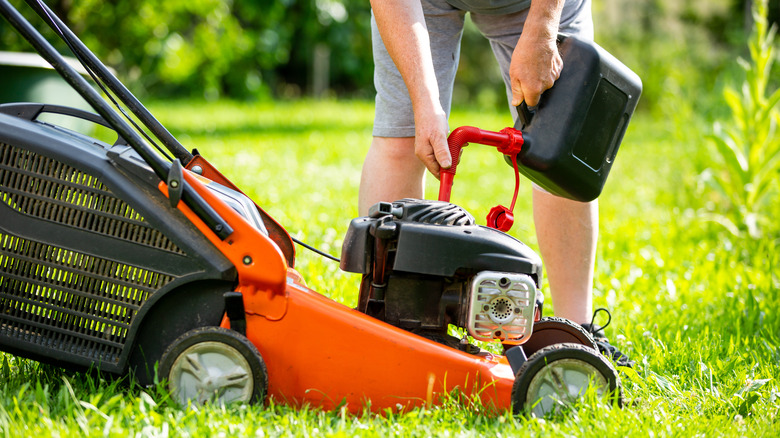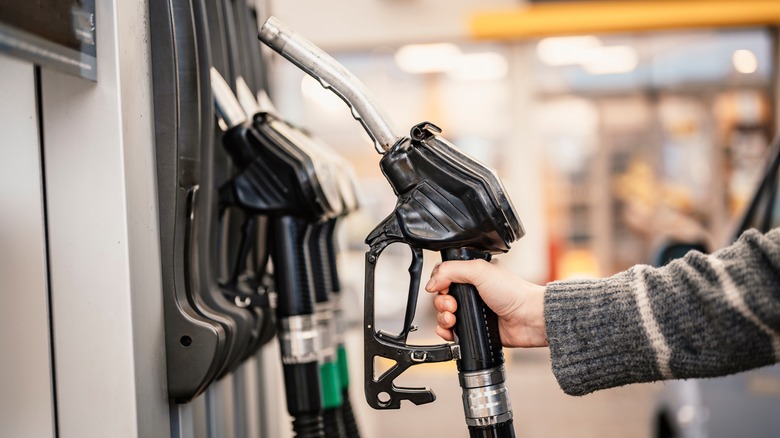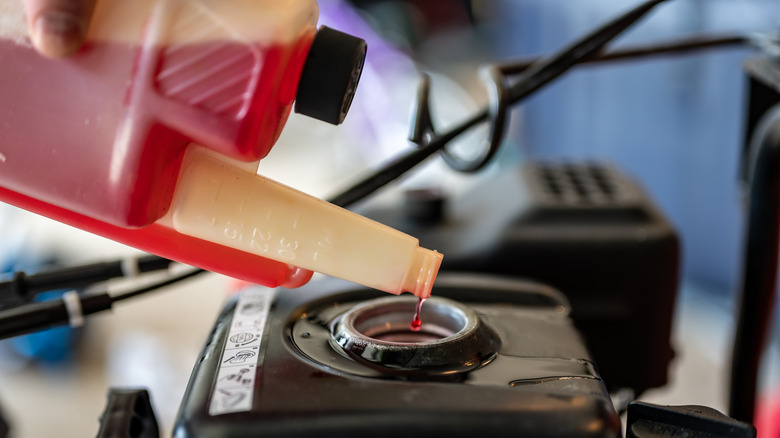The Common Fuel Mistake You're Making That Hurts Your Lawn Mower
Choosing the right kind of fuel for your lawn mower is essential to keep it functioning properly, and, consequently, using the wrong type of gasoline could shorten your mower's life span. When well taken care of, lawn mowers can last for 10 or more years but neglecting your mower's needs — like choosing a cheaper fuel — can make it wear out faster. Checking the manual is the best way to ensure you're filling your mower's tank with the best kind of fuel for it, but most of the time using gasoline with an octane rating of 87 or higher will work well.
Fuels with an octane rating lower than 87 have a higher chance of hurting your machine, and using lower-quality gas can sometimes void the warranty of your mower altogether, leaving you to pay for repairs out of pocket. This said, while using premium gas (or gasoline with an octane rating of 91 to 94) might seem like the best choice for your lawn mower's care, it usually isn't more beneficial.
Choosing the right fuel for your lawn mower
It's also important to consider the levels of ethanol in the fuel you're using for your lawn mower. Gasoline that contains more than 10% ethanol is generally cheaper, but mowers aren't typically designed to handle levels that high. This type of fuel can cause a small engine to work at higher temperatures, which can wear down the metal or rubber inside and hurt the fuel lines. Ethanol can also absorb water, bringing it into the gas tank and messing with the filters and pumps.
When you're choosing gas for your lawn mower, make sure to check the octane levels as well as the ethanol, since sometimes one is appropriate while the other is not. For example, E15 fuel generally has 15% ethanol, but it's often labeled as 88 octane. While the octane levels in this fuel would be fine for a lawn mower, the elevated ethanol content would not. Rather, you would want E10 gasoline, which contains no more than 10% ethanol and has an octane rating of 87. Note the U.S. Department of Energy hasn't approved E15 fuel for older vehicles (built before 2001) and small engines, including lawn mowers, for this very reason.
Why you shouldn't let gas sit in your mower all year
Leaving gasoline inside your lawn mower after you're done using it for the year is another mistake that can lead to major problems. After a few months, hydrocarbons in gasoline begin to evaporate. This will cause a brown, sticky layer to form inside the mower's fuel tank, which will eventually turn into varnish and clog the carburetor and fuel lines of the machine.
Such a development will prevent your mower's engine from working properly. So, later, when you go to cut your grass in the spring or summer, don't be surprised if the mower doesn't start up right away. Further, the engine may surge (evidence of a dirty carburetor) or simply may not be as powerful as before.
To avoid damage that causes costly repairs or that can't be fixed at all, it's best not to let fuel sit in your mower for extended periods of time. To prepare your lawn mower for winter, try siphoning out the old gas before storing it. You can also try pouring some fuel stabilizer into the gas tank, which will prevent the gasoline from evaporating as quickly.


